Temperature in different places around the world
Different places in the world have very different temperatures. Why does this happen?
In this article you can learn:
- The coldest and hottest places in the world
- What the Equator is and how it affects temperature
- What latitude is
- What height above sea level means
- How being near the sea affects temperature
This resource is suitable for weather topics for primary school learners.
Video - Why is the temperature different in different places?
Watch this video to learn about the hottest and coldest places in the world and discover why the temperature is different in different places.
Different places in the world have very different temperatures. Antarctica is the coldest place on earth and can get as cold as -89C! Death Valley in the United States is one the hottest places on Earth with temperatures as high as 54°C.
So why is the temperature so different in different places?
There is an imaginary circle called the equator that divides the Earth into two parts.
The Sun is our heat source here on Earth. The more sunlight a place gets, the hotter it will usually be. The amount of sunlight we get depends on how far we are from the equator.
Places on or near the equator, like the Sahara Desert, are very hot.
When we measure the distance between a place and the equator, we call itlatitude.
When you are at a higher latitude, like the North and South Pole, you are further away from the equator. That means that the sunlight is spread over a wider area on the ground and also has to pass through more of our atmosphere, so the sunlight is not as strong. So places far from the equator are much cooler.
But latitude isn't the only thing that affects temperature.
Glasgow and Moscow, the capital of Russia, are both at the same latitude. So although they are some 1600 miles apart, they are both the same distance away from the equator.
In Glasgow, during winter, the average temperature is around 3 degrees celsius.
But in Moscow, during winter, the average temperatureis much lower - minus 10 degrees celsius.
So, what makes these temperatures so different? Well, Glasgow is milder in winter because it’s nearer the sea than Moscow.
It’s only 14 miles from Glasgow to the sea, but it’s almost four hundred miles from Moscow to the nearest sea.
Land heats up and cools down much quicker than water does. Places near the sea stay warmer in winter because they are close to warmer water. On the other hand, Moscow is warmer than Glasgow in summer.
Another thing that can affect temperature in different places is he height above sea level.
Sea level is used to describe what the height of the ocean usually is. The higher you go above sea level, the lower the air pressure gets. And when the air pressure gets lower, the air has less energy and the temperature gets lower.
That’s why mountain peaks, which are high above sea level, are often cold and covered in snow.
What might affect the temperature where you live?
Why is the temperature so different in different places?
Distance from the Equator
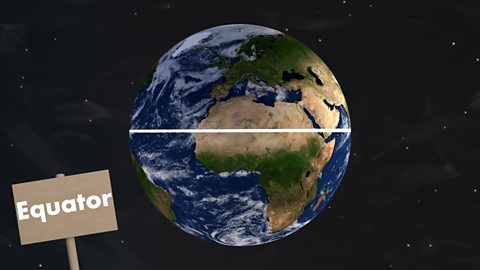
- The Sun is our heat source here on Earth. The more sunlight a place gets, the hotter it will usually be.
- The amount and strength of sunlight we get depends on how far we are from the EquatorAn imaginary line that runs around the Earth. The Equator marks the dividing line between the Northern and Southern hemispheres..
- When we measure the distance between a place and the Equator, we call it latitude.

Distance from the sea
- Land heats and cools much more quickly than water does.
- Places inlandA place that is far away from the coast. tend to be much hotter in the summer and much colder in the winter.
- Places near the coast tend not to get as hot in summer because they are next to cooler water. They don’t get as cold in winter because they are close to warmer sea.
Height above sea level
- Sea level is the height that the ocean usually is.
- The higher up you go from sea levelThe average level of the sea's surface., the colder it is. That’s why mountain peaks are often cold and covered in snow.
Different temperatures around the globe
Compare the temperatures of different places around the world. Can you explain why they have higher or lower temperatures?
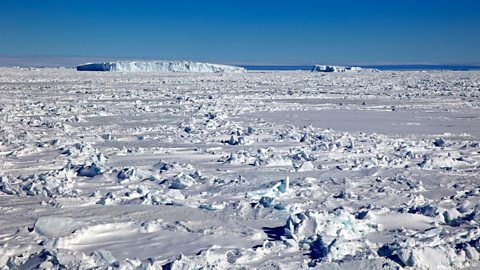
Image caption, Antarctica
Antarctica is the coldest place on earth and can get as cold as -89°C. It is so cold in Antarctica because it is very far away from the Equator. The Sun's heat and light has to pass through more of the Earth's atmosphere and is spread over a wider area. In our summer it is winter in Antarctica and there is very little sunlight at all.
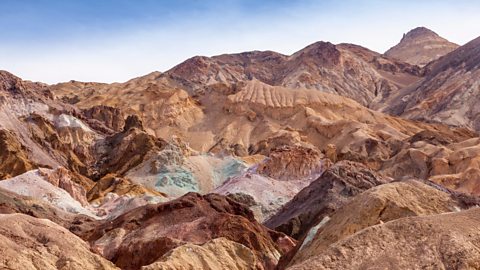
Image caption, Death Valley, USA
Death Valley in the United States is one of the hottest places on Earth with temperatures as high as 54°C. The The main reason Death Valley is so hot is its altitude. Parts of it are actually below sea level (up to 86 metres below sea level) so the air is thicker. It can hold more heat and the temperature stays high.

Image caption, Glasgow, Scotland
Places near the coast tend to be cooler in summer and milder in winter. Glasgow is near the coast so it doesn't usually get extreme temperatures in summer (left) or winter (right). Although people who live in or near Glasgow might disagree! (Elizabeth Leyden / Chris James / Alamy Stock Photo)
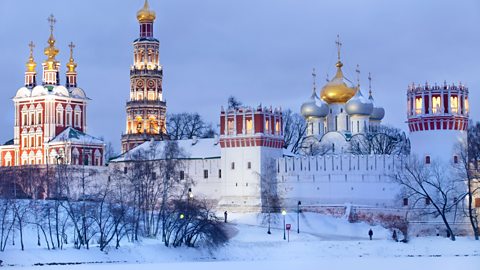
Image caption, Moscow, Russia
Although Moscow in Russia has a similar line of latitude to Glasgow, it is much further away from the coast. Land heats up and cools down much more quickly than water does so places inland, like Moscow, tend to be hotter in the summer and colder in winter. (Nikolay Vinokurov / Alamy Stock Photo)
1 of 4
How to measure temperature
Video - Measuring temperature
With help from BBC Weather's Kawser Quamer, let's find out:
- Why it is important to measure temperature
- How we measure temperature at weather stations
- What a Stevenson screen is
- How to measure and record temperature yourself
KAWSER: Aw, it's freezing today and you can see that from the map by the blue colours and temperatures close to freezing. So wrap up if you're heading outside. But why is it so important how hot or cold the weather is? And how do you measure temperature?
Lots of people rely on accurate temperature forecasts when doing their jobs. Farmers need to plan when to plant and harvest their crops and transport authorities need to know when they have to grit the roads or when trains can't run because the rails are too hot.And if you're planning on spending the day outside. Make sure you check the weather forecast first. Just so you know what clothes you should wear.
So how exactly are temperatures measured and recorded?
PUPIL: What's this box thing called?
EXPERT: What do you think it's called?
PUPIL: Is it a weather box?
EXPERT: Well, it's actually called a Stevenson screen and inside it has all the instruments to monitor the weather.
KAWSER: Meteorologists use a Stevenson screen to protect the instruments from the weather. Direct sunlight would heat the equipment and rain, sleet or snow would cool it down this would affect the temperature readings.
PUPIL: Which one is the thermometer?
EXPERT: We use this one to measure air temperature.
PUPIL: How does it work?
EXPERT: Well, if you look at the thermometer, there's liquid inside. This liquid is alcohol. As the temperature gets warmer, the alcohol expands and pushes the marker along. When it gets colder, the marker moves back as the alcohol goes down. If you look along the length of the thermometer, there's lots of numbers to help us to measure what the temperature has been.
KAWSER: Temperature is measured in degrees Celsius. Zero degrees Celsius is the point at which water freezes. When it's hot, the number of degrees Celsius shown on the thermometer gets higher and if it's very cold, the temperature can drop below zero and into negative numbers.
There are different kinds of thermometers. They can be glass or plastic and some even have digital displays. Why not use a thermometer to check the temperature in different places inside and outside of your house or school?
Just remember that it's best to record the temperature away from direct sunlight or if you were checking the temperature inside, remember heaters and radiators may affect your results.
Temperatures taken all over the country are used by meteorologists when making weather forecasts. What's the weather like where you are? And what's the temperature?

Key words about temperature
- temperature - How we measure how hot or cold it is. We usually measure temperature in degrees Celsius.
- Equator - An imaginary circle that divides the Earth into two parts. Places above the Equator are in the Northern Hemisphere. Places below the Equator are in the Southern Hemisphere.
- latitude - How we measure the distance between a place and the equator. For example, Scotland is on a latitude of about 55-57° North of the equator.
- atmosphere - A layer of air which surrounds the Earth. The Sun's heat and light has to pass through the atmosphere before it can reach us.
- sea level - What the height of the ocean usually is. The higher you go above sea level, the thinner the air gets and the colder it becomes.
Test your knowledge
Quiz
Test your knowledge of temperature with this short multiple choice quiz.
Challenge

Measure the temperature in different places using a thermometer and display the temperatures using a table.
Here are some tips to get you started:
- Remember, your table will need the following information:
- headings clearly labelling the information you are displaying:
- where you recorded the temperature
- what the temperature recorded was in degrees Celsius.
- Once you have recorded the temperatures, you will need to think about the order you put your information in. For example, you could display the information in order from highest to lowest temperature.
- Can you think of any other ways to display information? What about a graph or a bar chart?
Watch the video above to get more help with measuring temperature.
Learn about displaying data with this 2nd level Maths and Numeracy article: How can data be displayed?
More on Earth and space
Find out more by working through a topic
- count9 of 18

- count10 of 18
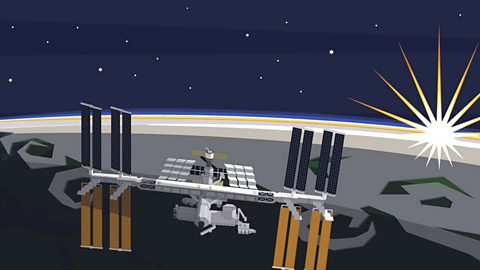
- count11 of 18
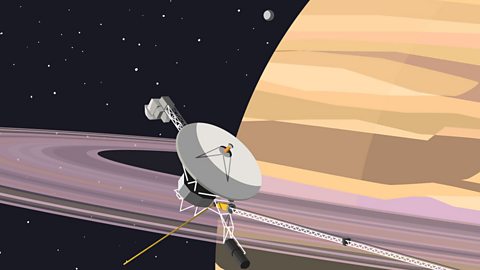
- count12 of 18
